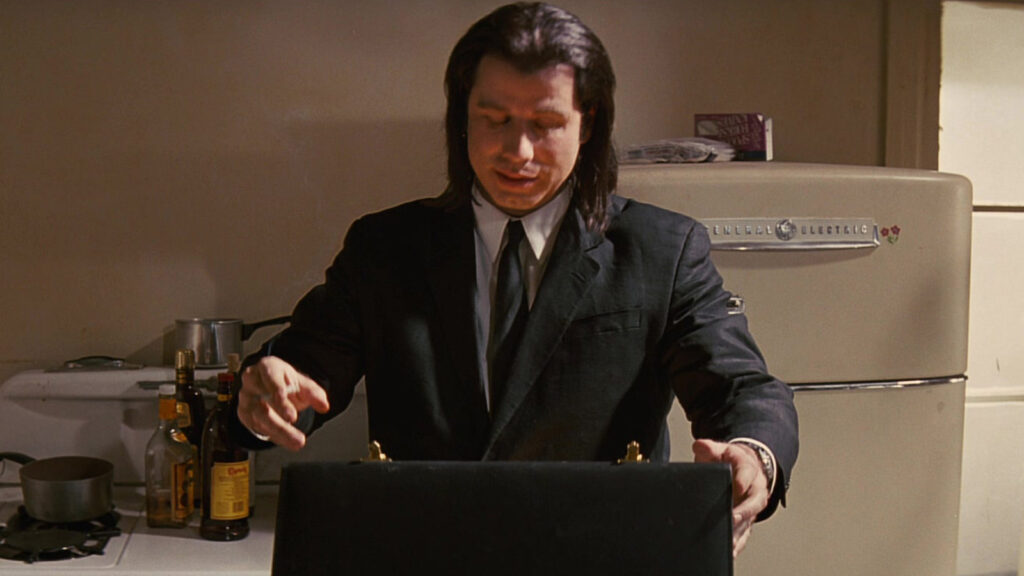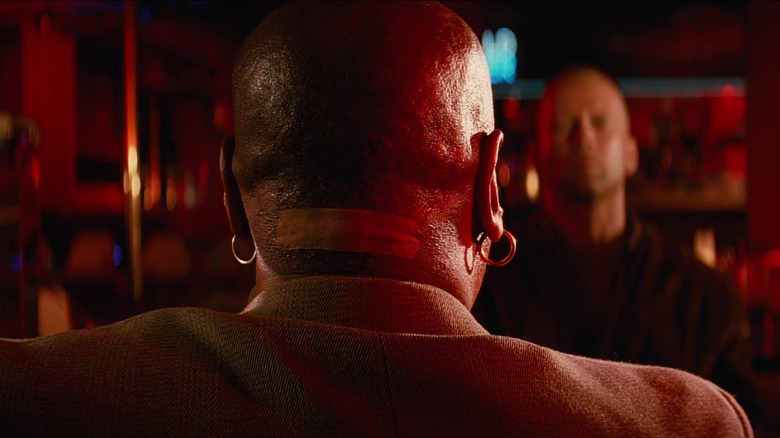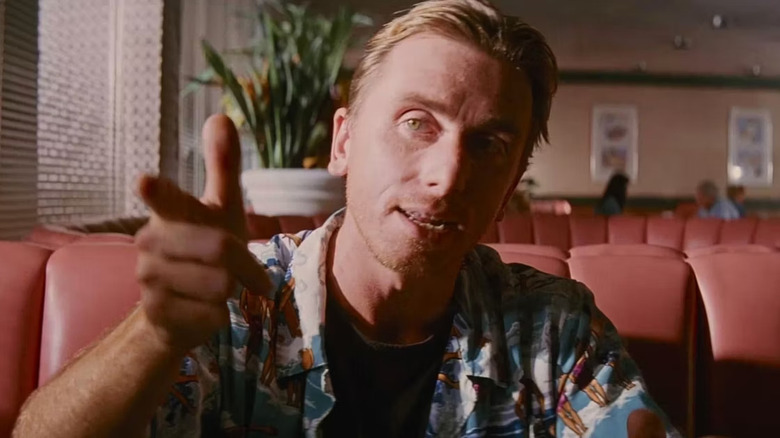We may receive a commission on purchases made from links.
1994 was a remarkable year that offered moviegoers the now-beloved classics “Clerks,” “The Lion King,” “The Shawshank Redemption,” and “Forrest Gump.” It was also the year Quentin Tarantino’s crime thriller “Pulp Fiction” hit theaters. A Los Angeles-set collection of vignettes that was a hit with critics and audiences, it ultimately lost the best picture Oscar to “Forrest Gump,” and Tarantino watched Robert Zemeckis take home the best director statuette as well. The seemingly disjointed scenes that made up the film (originally including one that was so disgusting, it had to be cut from the film) were tied together with a few plot threads, including a mysterious briefcase that is the property of gangster boss Marsellus Wallace (Ving Rhames).
The briefcase is a classic movie MacGuffin: an object that drives a film’s plot while remaining to some degree a mystery to the audience. We’re introduced to the case when Wallace’s henchmen, Jules Winnfield (Samuel L. Jackson) and Vincent Vega (John Travolta, who saw his career resurrected by the film), reclaim it from a group of young men who stole it, in the same scene where Jules delivers his memorable biblical refrain for the first time.
The case is protected by the combination “666” and casts a warm yellow glow on Vincent’s face when he opens it, but beyond that, the audience knows only that it is extremely valuable to Marsellus, and thus to Jules and Vincent as well. The only description we get from a character in the film is a sarcastic claim from Jules that “my boss’ dirty laundry” is in the case. There has been plenty of speculation to go along with a few confirmed tidbits about the contents of the briefcase over the last 30-plus years, information we’ve gathered and organized below.
Filmmakers intentionally left the briefcase a mystery
A handful of clues from the film gave rise to a popular fan theory that Marsellus Wallace’s soul was in the briefcase, speculation that was bolstered by a large band-aid affixed to the back of Ving Rhames’ neck in the scene where Jules and Vincent deliver the case to him. The idea was that the devil may have extracted Wallace’s soul through the base of his neck, but the truth behind the band-aid is that Rhames wanted to conceal a cut he suffered from shaving his head from the cameras.
In Roger Ebert’s 1997 book, “Questions for the Movie Answer Man,” “Pulp Fiction” co-writer Roger Avary explained that he and Quentin Tarantino purposely left the contents of the briefcase a mystery to plant a seed in the minds of viewers. “No prop master can come up with something better than each individual’s imagination,’ he said. “At least that was the original idea. Then somebody had the bright idea (which I think was a mistake) of putting an orange lightbulb in there … Didn’t need to push the effect. People would have debated it for years anyway, and it would have been much more subtle.”
Tarantino confirmed their intent in a 2009 interview with Charlie Rose, saying, “I like the idea that you open up the briefcase in ‘Pulp Fiction,’ and I don’t tell you what’s in there, but it’s up to you to figure out what’s in there, and now that’s your movie.” As for what was actually in the prop case that Vincent and Jules lug around for much of the film, according to Samuel L. Jackson, it was just a couple of light bulbs and batteries to power them.
One Pulp Fiction actor knows the truth about the briefcase
While Quentin Tarantino publicly remains obtuse regarding the contents of Marsellus Wallace’s briefcase, he did reveal its secrets to Tim Roth, who played petty criminal Pumpkin in “Pulp Fiction.” But when asked about it by Variety, the actor said, “We tend to know only as much as [our character] would know, but one thing that I do know because my character would know, which is what’s in the suitcase. But Quentin asked me not to mention it.”
Quentin Tarantino told Ali Plumb of BBC 1 radio, “Unfortunately, the whole idea while I didn’t tell people what was in the suitcase was so they would come up with it on their own, but nobody wants to do that, they just want to know what I think. And I don’t give a damn what I think, I want to know what other people think.” He revealed that of the countless people who have approached him to ask that question, only a handful have offered their thoughts on the matter — which disappoints him, since he said he’s actually very interested in hearing what the film’s fans believe is in the case.
It’s possible that only Tarantino, Roger Avary, and Tim Roth truly know what was in the briefcase, but be sure to let the director know your impressions should you ever have the opportunity. Maybe he’ll even let you know if you’re close to figuring it out.



